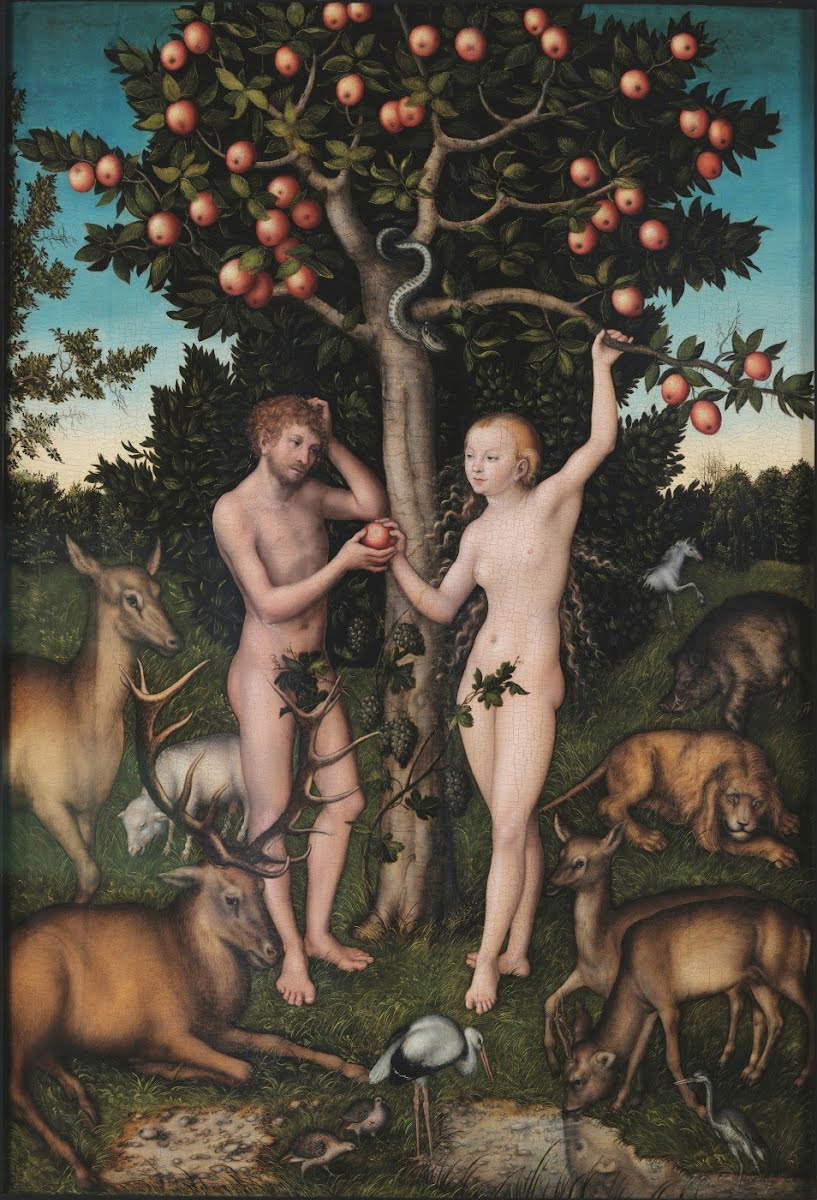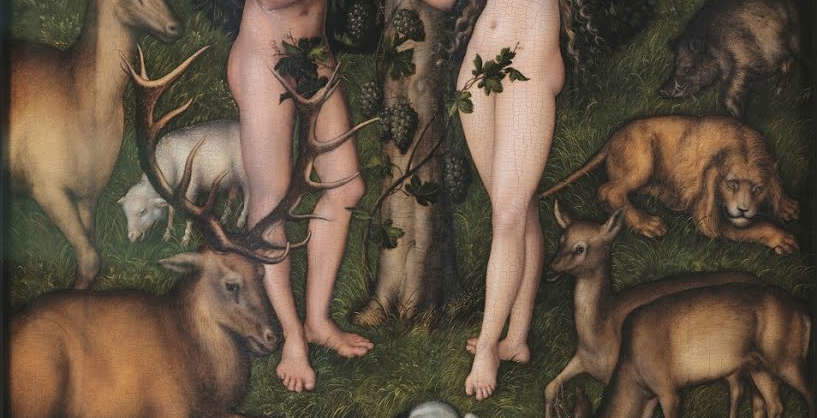We discuss censorship in art throughout the centuries in the next installment of Art Night. Artists have developed unusual ways to hide the appearance of their subjects’ intimate parts, which forces them, however, to focus on a detail that no one sees, even if it lies at the center of the composition. A theme at the center of the documentary Behind the Fig Leaf, by Agnès Obadia, produced by Harbor Films airing Wednesday, Feb. 28, at 9:15 p.m. in first viewing on Rai 5.
When did representing genitals become taboo? The issue begins with Adam and Eve and the depiction of the very first fig leaf. A symbol of modesty and decency, fig leaves hid male and female genitalia equally, denying their difference. Later, the fig leaf gave way to the strangest objects. In Lucas Cranach’s painting “Adam and Eve” from 1526, deer antlers conveniently cover Adam but mischievously emphasize his nudity. In Antiquity, female nudity was perceived as the very embodiment of desire. For women, the variants of the fig leaf that naturally serve as sexual symbols are the flower, the jewelry box, the mirror, a lock of hair or a strip of fur. Unless it is a toad or a devil to imply disgust.
The Birth of Venus, painted by Botticelli in 1485, features nudity that seems even more shameful because Venus’ private parts are hidden by a very evocative curly lock of hair. But the omission suffered by women is implausible for men. Even when their members are reduced to childlike proportions, as in most classical and certain Renaissance works, it is simply impossible to avoid the issue completely without evoking castration. During the Renaissance, artists did not bother with subtle metaphors. They used phallic objects: branches, clubs, donkey jaws, snakes and of course swords or their sheaths, a fat butterfly that passed for Bronzino, shells and mollusks. Michelangelo painted hundreds of fascinating nudes on the ceiling of the Sistine Chapel, of course. Completed in 1541, the fresco caused a scandal. In 1559, the pope asked Michelangelo to cover his too indecently exposed genitals. The painter’s response was, “Tell the Pope that it is an easy retouching to do. But let him begin to retouch the world, and the paintings will follow.” After Michelangelo’s death, the Council of Trent ordered the painter Daniele da Volterra to complete the cover-up work, a mission that earned him the nickname “Il Braghettone.”

By the end of the 19th century, the absurdity of censorship began to provoke sarcasm. Caricaturists such as Cham Daumier, Nadar, and Choubrac had a field day. In the Surrealist movement, the fig leaf got a new life. Both fantastic and imaginative, it no longer stigmatized censorship but signified the irreducible strangeness surrounding the question of sex. The fig leaf took on incongruous proportions for Max Ernst; Salvador Dali turned it into a lobster; Magritte, into a ballerina. The list of absurd or suggestive objects used to hide and enlarge female genitalia is long. Today, have the censors lost the game? In contemporary art, naked bodies abound, and the public is warned before entering a museum. In 2017, an advertising campaign for Egon Schiele’s centennial is censored in several cities in Europe because the images are deemed too strong. The genitals, which could cause embarrassment in public places, are covered with a white strip: a cache-sexe in its own right. The Vienna Tourist Office, with ingenious irony, adds this text, “I’m sorry, I’m 100 years old but I’m still too daring.” Taboos still endure. So where are the new fig leaves? If we look more closely, they are everywhere. Sprinkled on walls, in gardens, on posters, contemporary images are full of them. Social media, advertising, mainstream cinema... The modern fig leaf is part of our daily lives.
 |
| Behind the fig leaf: a documentary on Rai5 about genital censorship in art |
Warning: the translation into English of the original Italian article was created using automatic tools. We undertake to review all articles, but we do not guarantee the total absence of inaccuracies in the translation due to the program. You can find the original by clicking on the ITA button. If you find any mistake,please contact us.